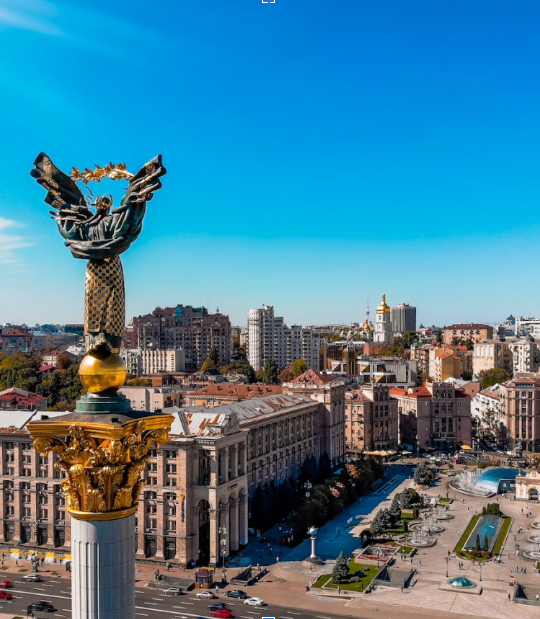 The world observes October 17 every year as the International Day for the Eradication of Poverty. With this observance the UN aims to highlight the plight of the poor and impoverished. The day is a global call to do more in eradicating global poverty and hunger. Here is a look at some of the ongoing initiatives and the progress made.
The world observes October 17 every year as the International Day for the Eradication of Poverty. With this observance the UN aims to highlight the plight of the poor and impoverished. The day is a global call to do more in eradicating global poverty and hunger. Here is a look at some of the ongoing initiatives and the progress made.
Table of Contents
Origins
The first commemoration of the International Day for the Eradication of Poverty can be traced back to 1987 in France. It was started by Father Joseph Wresinski, founder of the International Movement ATD Fourth World. He unveiled a memorial for the victims of extreme poverty and hunger at the Human Rights and Liberties Plaza at Trocadéro in Paris. 100,000 people turned up for the event in a symbolic gesture of support. Heads of government around the world took notice, as did the United Nations General Assembly (UNGA). On December 22, 1992 member states of the UNGA committed to unite against chronic poverty and hunger. They passed a resolution marking October 17 as the International Day for the Eradication of Poverty.
Importance
The 2019 Global Multi-dimensional Poverty Index is a research study conducted by the United Nations Development Programme (UNDP). The research revealed that over 1.3 billion people live in poverty. They represent nearly a quarter of the world population. The UN defines poverty as surviving on less than $1.9 per day. Extreme poverty is where people are deprived of basic human necessities like food, safe drinking water, sanitation, and shelter. In its Poverty and Prosperity Study 2020 the World Bank estimated that 689 million people are living in extreme poverty. In 2020 this number will rise by another 115 million.
Observing this day is the UN’s way of reminding world leaders to renew their commitments towards combating poverty. It is also a call to action for the general public. Every year the UN observes this day with a unique theme. The theme for 2020 was ‘Acting together to achieve social and environmental justice for all’.
Activities
Much of the world remains unaware of the plight of the impoverished. Humanitarian groups and NGOs run social media campaigns to spread awareness. A letter about our collective commitment to eradicate poverty is sent on this day by leading humanitarians to prominent world leaders. Several conferences and debates on this subject are organized. The objective of many of these discussions is to measure progress and assess what more must be done.
Eradication of global poverty is a pressing issue, now considered on par with climate change. Impoverished communities face hunger and malnourishment. Poorer world regions are also wrought with civil tensions and political instability. Left with few means of sustenance these communities often seek safety and stability by migrating to other countries. Oxfam America conducted a study titled ‘Global migration and poverty crisis’. It found that poverty is a major reason for the global refugee crisis which has ensued since the last decade. Another research conducted jointly by Harvard and Yale Universities found that poverty, more than war, severely affects the cognitive functions in adolescent refugees and migrants.
Long term goals
UN Member States adopted 17 Sustainable Development Goals (SDGs) in 2015. One of these is to reduce world poverty from 10.1% in 2015 to 3% in 2030. As a part of the initiatives the UN urges its members to generate employment opportunities and create sustained economic growth. The US contributes to these efforts through USAID, the United States Agency of International Development. It promotes long term development in third world nations through agriculture, health services, and mass production. The UK does the same through their Foreign Commonwealth & Development Office (FCDO). The UNDP works with many other organizations to eradicate poverty and provide food to the malnourished in 170 countries.
Progress
The World Bank’s statistics reveal that the number of people living below the poverty line declined from 1.9 billion to 1990 to 700 million in 2015. One of the contributing factors has been remittances. Migrants who find work abroad are able to support their families back home via international money transfers. This helps alleviate poverty, sometimes for entire communities. In 2018 global remittances touched a new high, with USD 529 billion sent to developing countries. This represented an increase of 9.6% over the previous year.
What the future holds
The COVID-19 crisis has sent many economies reeling. We may see an inevitable reversal of some of the progress achieved towards the eradication of poverty in past years. However, the world can still reach the goal of reducing poverty to below 3% by 2030. This needs much international cooperation and coordinated efforts from all nations.
About the author:
Hemant G is a contributing writer at Sparkwebs LLC, a Digital and Content Marketing Agency. When he’s not writing, he loves to travel, scuba dive, and watch documentaries.







